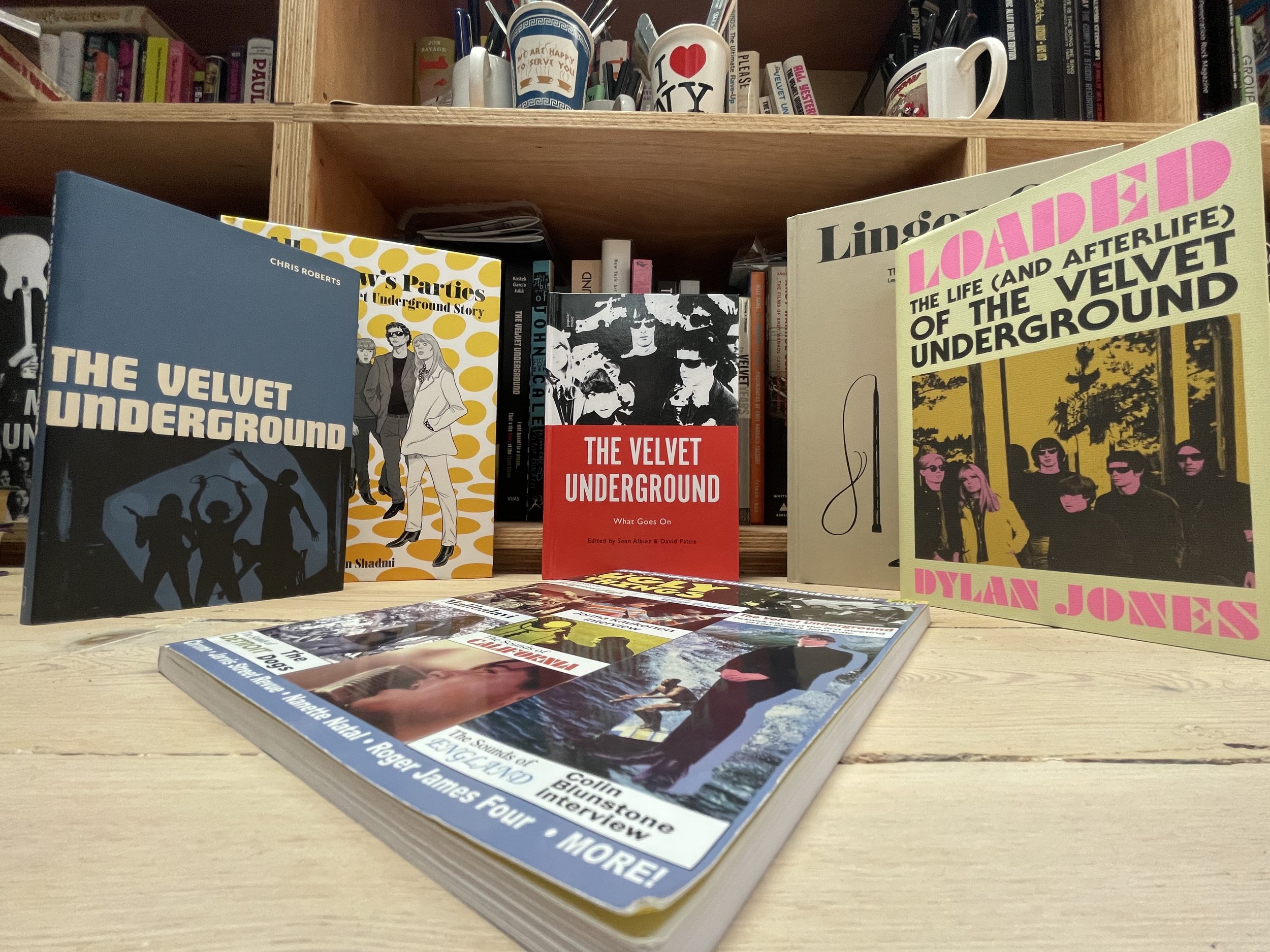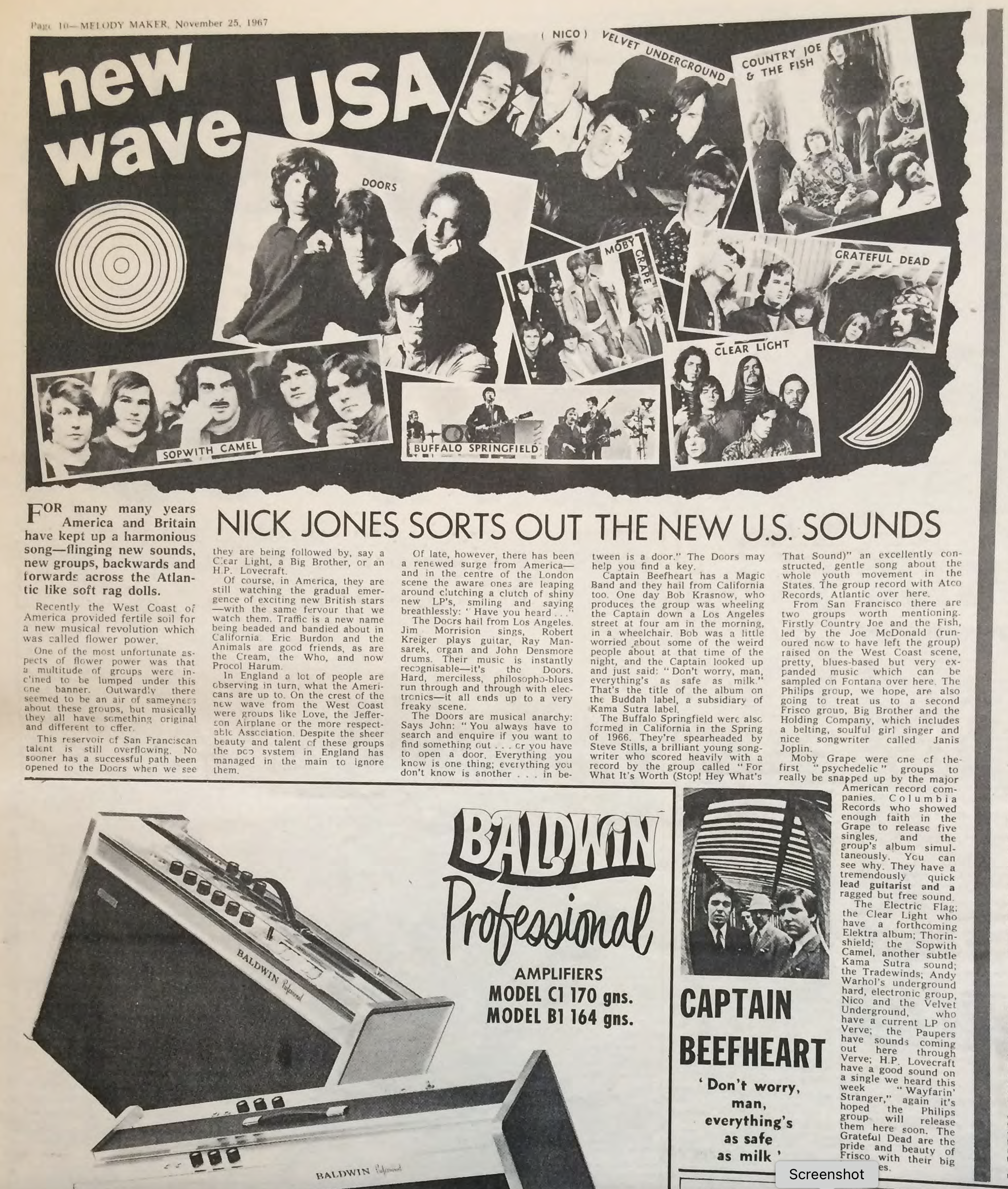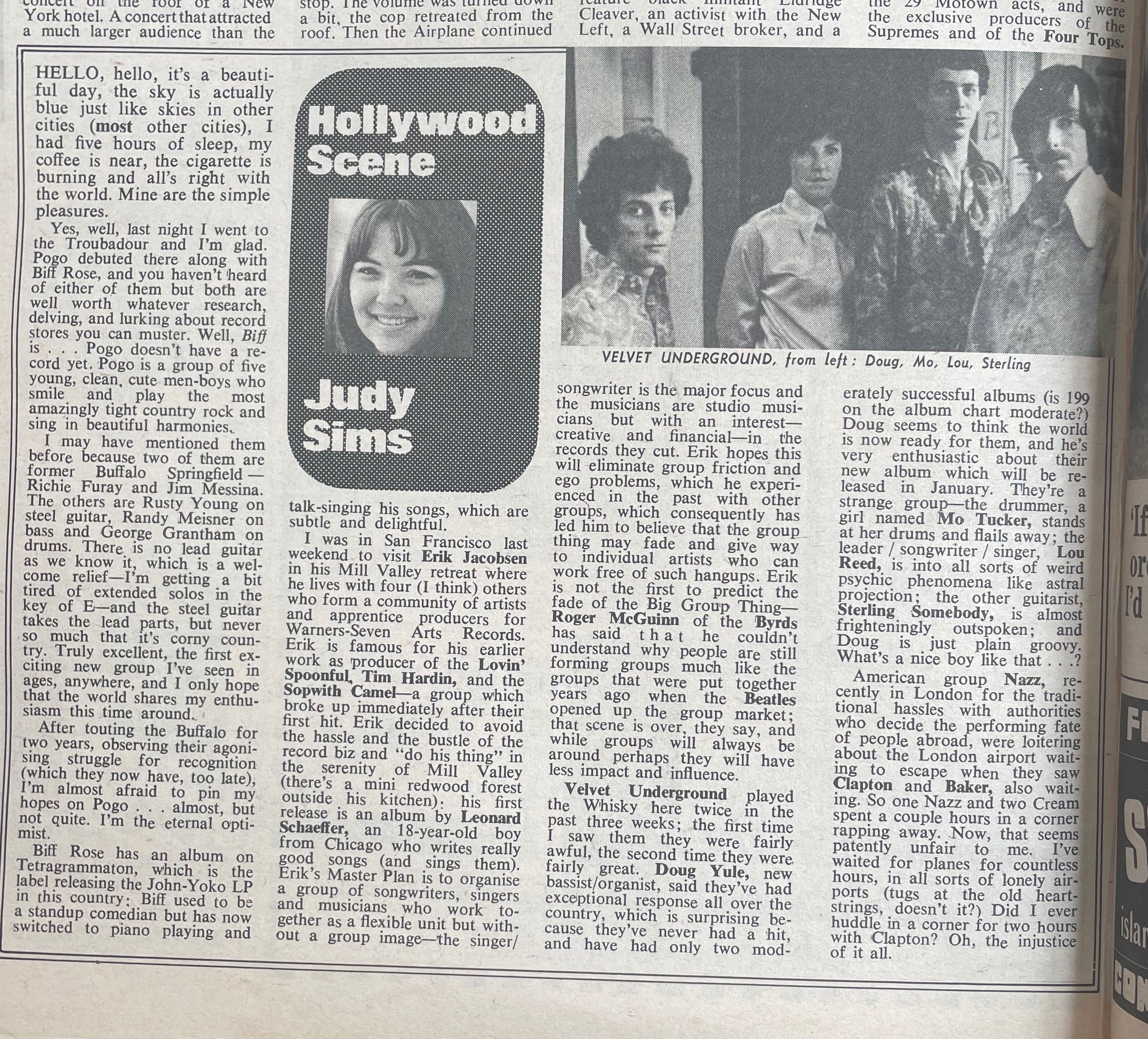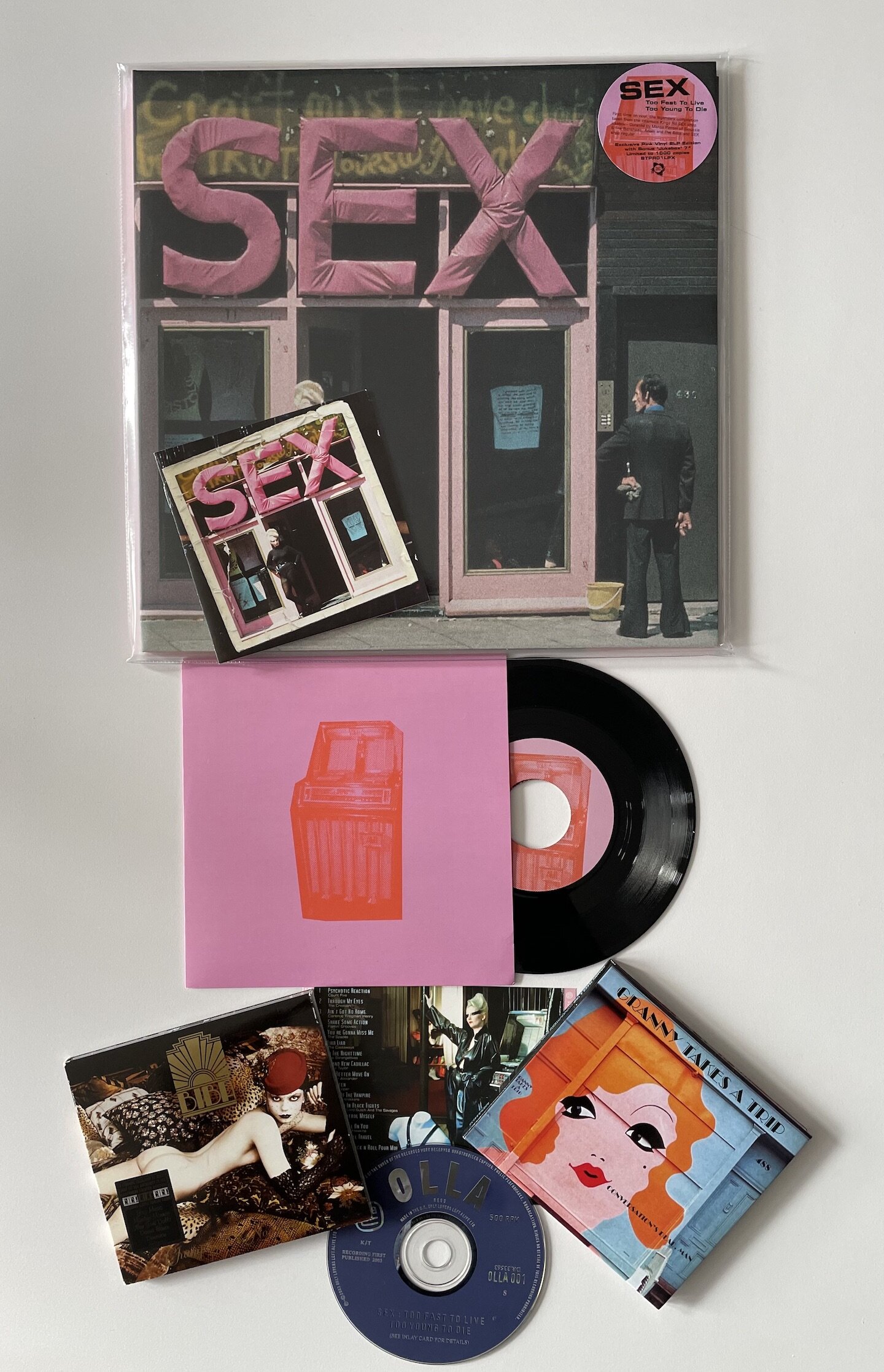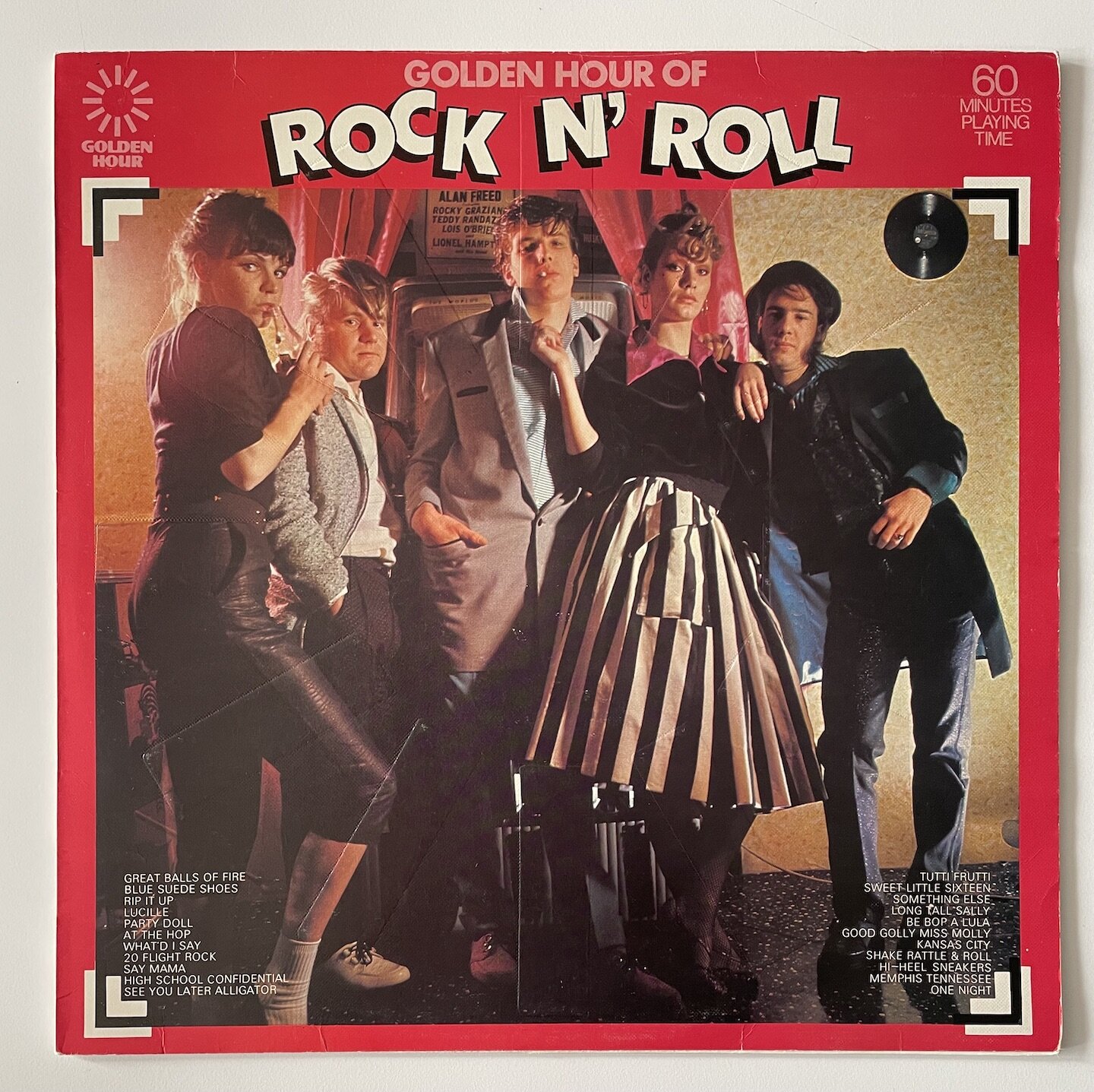A small stream of new books on The Velvet Underground have joined with Todd Haynes’ documentary to produce yet another upswing in interest in the band; maximum momentum maintained even if, as a fan, you can barely find the energy to pull the cellophane from yet another behemoth record set that you surely already own in multiple versions. The fix is in, the fascination doesn’t pall, the same conjuring tricks still tantalise and please; familiarity and repetition a certain comfort – expectations will be met, satisfaction all but guaranteed.
Everything is known, now only the skill of the story-teller is there to give life to the tale. Chris Roberts is one of the better recitalists, he is an eloquent writer, conversational in style, who promises in The Velvet Underground (Palazzo, 2022) an element of novelty based on his three encounters with Lou Reed. The book is well-designed with numerous, well-chosen, images but, for all that it offers, a reader’s prior knowledge will leave the author behind, racing on ahead of the biographical sketches; his rendering of the chance encounters and short-lived creative alliances that produced the first two albums; the sundering of Reed and Cale’s partnership and the trials and tribulations of trying to achieve popular acceptance, before Reed returns to the family home, suburbia, therapy and prescription pharmaceuticals.
The novelty offered to bring renewed excitement to these story conventions in All Tomorrow’s Parties: The Velvet Underground (2023), Koren Shadmi’s graphic novel, is front and centre. His tale is focused on the relationship between Reed and Cale, the former all ego, paranoia and anger, the latter a bemused and betrayed friend. The story as good as ends with the fallout, missing entirely the third album, before briefly sketching in the run of Max’s Kansas City gigs and Reed’s retreat to Long Island, which make up my favourite set of panels. The characters are all adroitly rendered, wholly recognisable, Nico is surprisingly sympathetic, Cale surprisingly passive in the face of Reed’s excesses. Reed is volatile, self-obsessed, endlessly resentful – a negative presence. Why anyone would put up with him is unanswered. Moe and Sterling, as always, are secondary bit part players, blank buffers – calm, mundane presences to counter Nico, Cale, Warhol and Reed’s overindulgences. Like the high-end boxed sets, the novel is a slick production; its spot gloss perfection somewhat at odds with its subject, yet its deftly rendered caricatures readily escape their packaging.
“New Wave USA’ . . . we’re not talking CBGBs 1976 here . . . The first photograph of the VU to appear in the British music press, Melody Maker (November 25, 1967)
Dylan Jones’ Loaded: The Life (and Afterlife) of The Velvet Underground (White Rabbit, 2023) follows the formula first introduced in Jean Stein’s Edie Sedgwick biography (1982) and deftly developed in his earlier Bowie volume: a careful assembly of previously published quotations, supplemented with new interviews, all held together by Jones’ narration and critical interjections. Even if a good number of the sources are known to a reader that familiarity is mitigated by the cumulative effect of the pieces, by Jones’ editorial curation. If the reader’s tendency is to race ahead of Roberts, here the effect is to keep pace with Jones, who pauses the rush with either a new voice, story or comment, such as Jimmy Page watching the Velvets over three nights at Steve Paul’s Scene club or Marco Pirroni’s observation:
At the time I couldn’t discern any influencers the band had. It didn’t sound like anything else. Now I know that all my heroes – Bryan Ferry, David Bowie and Lou Reed – were all obsessed with Bob Dylan.
Where the collage approach is at its weakest is in following up such an insight, pushing the idea just that little bit further. Instead the perspective shifts to another facet of the revolving glitterball Jones is spinning. The polyphony of voices also tend toward recalling the impact of first hearing the Velvets, sometimes years after their demise. The dependence on such after the fact contributors is understandable and the takes of Tracey Emin, Jarvis Cocker or Bobby Gillespie are not without interest, but they twirl the ball away from the history of the band (and give the whole a very British perspective on things). A problem facing all VU chroniclers is that Reed & co. gave so few contemporaneous interviews, the band members and Warhol acolytes’ views are all, therefore, delivered with their own spin on events. The passive voice of the editor in such oral collections means that commentary on the more wilfully self-serving often goes unchallenged, which is not necessarily a problem, or at least it isn’t when it comes to Mary Woronov’s acerbic commentary.
Clipping floating around on the internet, can anyone help identify its original source?
A welcome corrective to the overwhelming focus on the Reed/Cale axis in just about every other volume on the band is Ignacio Juliá’s Linger On: The Velvet Underground: Legend, Truth, Interviews (Ecstatic Peace Library, 2022), an expanded edition of his Feed-Back (Munster Records, 2008), which gives centre stage to Sterling Morrison. The introductory assemblage sets the scene: Bobby Gillespie (again) on the VU as rock’s ‘best kept secret’ willed above ground and into the open by Juliá’s ‘dream power and soul energy’ that is laid alongside the author’s declaration that ‘The legend of the Velvet Underground fades away. It is no more. It's been totally exposed to the light. Their secrets have been revealed and the myth evaporated’. Carried by an occult iconography, legends, though, exist only in the process of their tale being told, otherwise we are dealing with history, and all this productivity being reviewed here suggest the legend is doing more than just sputtering on, it’s the history that is fading.
In his talks with Juliá, Morrison is lucid, thoughtful – centred. He’s not competitive, appears to have no regrets and, like Maureen Tucker, is alarmingly modest in discussing his contribution to the band. There’s a marvellous section where he recalls playing Poor Richards in Chicago while Reed was in hospital with hepatitis:
We played for a week, with all different versions of the songs, with John on vocals, and we did lots of practicing just to make the songs work. It was fun. That was the first time that anybody could go missing and the shows would go on – John or Lou or anybody, it didn’t matter. . . we moved Maureen to bass and rhythm guitar. We got Angus MacLise, the original drummer, back to play drums. So here’s this astonishing incarnation of the band. “Sister Ray” grew out of this one gig.
Here he is, finally in the limelight, but the spot on Morrison quickly shifts away and he is soon back on the periphery of things, stage right, looking in. In band photographs, from 1965/66, Morrison’s face is always concealed behind a mop of long hair, wraparound dark glasses, swirling cigarette smoke. Tall and skinny, cuffed Levi’s worn over black engineer boots, he was the Velvets’ suburban juvenile delinquent figure, a perfect foil for the other three but never the main event. As Juliá’s interviews mount up, with all the old Velvets – Nico, Lou, John, Moe and Doug – and with others who have stories to tell – Jackson Browne, Gerard Malanga, Lenny Kaye and Todd Haynes – as the volume of voices increases, as in Jones’ Loaded, the centre contracts. What were they all talking about? In its parts Linger On is a work to cherish, but as a whole it is a babel of competing voices all demanding equal attention.
That the story’s broad outline no longer need be tendered is conspicuously the case with two lengthy articles by longstanding Velvets’ aficionado, Phil Milstein, in two recent issues of the inestimable Ugly Things. (It’s also worth noting the magazine’s publication of David Holzer’s exploration of Lou Reed’s obsession with the white light mysticism of Alice Bailey #61, Winter 2022). In #55 (Winter 2020) Milstein takes a deep dive into the world of Michael Leigh who wrote the pulp exploitation book from which The Velvet Underground took their name. The topic is, as Milstein admits, peripheral to the main event, even if the book’s cover imagery has been purloined numerous times to ground the band’s interest in the fetishistic and the taboo. Over 11 A4 sized three column pages, Milstein tracks the biography of the author and the various incarnations of his tale of the ‘bizarre sex underground’. It is an epic undertaking, excessive in its obsession and quite marvellous, even if the included photograph of Tony Conrad’s dirtied, torn and frayed personal copy – an occult relic if ever there was one – is sufficient in itself to maintain the book’s iconographic potency.
‘Doug is just plain groovy . . .’ Disc & Music Echo (November 30, 1968)
In Ugly Things #60 (Summer 2022), Milstein is back and surpassing his earlier effort with a 22 page inquiry into the pre-Velvet Underground activities of Reed and Cale, with a focus on the former’s Pickwick-era songwriting and recordings. The research is once more impeccable and just as obsessive – has the flotsam of an exploitation record company ever been picked through with such care and attention as Milstein practices here? I find it all delightful, but to what end, to what effect, does all this expended energy add to the matter of The Velvet Underground?
The question of why The Velvet Underground matter should surely form the heart of any academic study of the band yet, until now, there has been no such book length exploration of The Velvets. Sean Albiez and David Pattie’s edited collection The Velvet Underground: What Goes On (Bloomsbury, 2022) corrects this situation and presents sixteen essays from academics aligned with a range of disciplines, film, queer, cultural, literary, music and media studies – a good half of the book, however, is less concerned with the band than with its cultural and musical influence on other artists and on the post-VU careers of Nico, Cale and Reed. Though there is a panoply of theoretical approaches in play, none of which would or should bother Milstein, they do share the same desire to focus on an aspect of the story rather than the story itself. With a few notable exceptions, what they don’t share with Milstein is his output’s basis in primary research.
Like all such collections, the editors, as they themselves reflect, are at the mercy of who responds to their call for papers. Such a state of affairs usually leads to a fairly eclectic set of essays and this is no exception, so they will forgive me, I hope, if I only focus on the contributions that play directly to my interests. Their introduction sketches in the broad dimensions of the band’s legacy – cult rebel outliers, inside the Factory with Warhol, their place within the Pop avant-garde and the chance meeting of Cale and Reed (the classically trained musician and the songwriter of pop novelties) whose ambitions coincide, as one slips down and the other climbs up the ladder of cultural capital. Recognising that Cale, Reed and Nico garner most of the attention, the editors finish the introduction by profiling Morrison, Tucker and Yule.
What Goes On has been graced with a superb opening chapter, which puts the band back into the context of 1960s pop culture. Jeffrey Roessner’s ‘Saved By Rock ’n’ Roll: The Velvet Underground In and Out of History’ begins with the image of Petula Clark heading downtown as The Velvets head in the opposite direction in 1965 Manhattan. Countering the idea that they were the supreme rebels, pushing against the flow of their times, Roessner argues you can find analogues for their experiments, for almost every radical gesture they made, among their immediate peers:
Their distinctiveness, then, is less about musical style than about the rejection of the florid psychedelic image and countercultural politics that have become the dominant image of the time.
He moves through the posthumous construction of The Velvets as being a band out of time:
When we say they don’t fit, we must mean that they don’t fit our conception of the era. That’s one clue that the problem is less with the band and more with our restricted, stereotypical view of the era.
Roessner is not out to deny the band’s originality, but to give back to their story some historical context. In doing so he doesn’t denigrate their achievements, instead he enhances our understanding of why they matter. As an entrée to a book of essays on the Velvets it can’t easily be improved upon.
‘marathon freaky hard-rock'. . .’ review of White Light/White Heat by, I guess, Hugh Nolan. Disc & Music Echo (June 8, 1968)
‘A hippy must . . .’ review of White Light/White Heat in Record Mirror (June 8, 1968)
Johnny Hopkins and Martin James follow up with an essay that could not, in turn, have been better aligned with Roessner than if it had been commissioned by the editors, perhaps it was. The joint authors’ concern with the contemporary pop scene of the sixties is less with the overlaps the Velvets shared with the American counterculture than with their place in a transatlantic network. Despite never having played London and with only a few traces left in the contemporary British music press, the links were, as they show with numerous primary sources, tangible. Countercultural communications through outlets like Better Books and International Times fostered the already fermenting Pop Art connectivity of Warhol’s artistic enclave with his British counterparts, while the personal connections of Cale and Nico coalesced with the London-centric nature of the pop scene circa 1965 and into 1966 with the repeated Atlantic crossings of The Beatles, Stones, Animals, Yardbirds and The Who. Of all the aspects discussed and analysed in the volume it is this one I find the most intriguing. Into this communal hothouse of cultural exchange figures like Barry Miles, John ‘Hoppy’ Hopkins, Mick Farren, Mike McInnerney, Ken Pitt and his charge, David Bowie, Simon Napier-Bell and The Yardbirds flit before the eye – filtered through high expectations of the imminent arrival of the Exploding Plastic Inevitable on English shores. One of the great ‘what ifs’ of pop history.
It’s a shame that an essay could not have been found on the impact of the band and their connection with Warhol on the British art school scene, developing perhaps the insights given by Michael Bracewell in his study of Roxy Music on the trans-Atlantic connection between Newcastle and Manhattan, orchestrated by Richard Hamilton and experienced by his student Mark Lancaster. Nevertheless, Hopkins and James’ piece is followed by another strong entry, Glyn Davis on the link between Warhol’s filmmaking and participation of The Velvet Underground in that practice. Symphony of Sound (1966) and The Velvet Underground in Boston (1967) are held up for brief consideration alongside Nico’s appearances in shorts and in Chelsea Girl, but it is the ‘Screen Tests’ that are the focus and how these, in turn, became part of the EPI experience –‘aural and visual agitation combined’ where total cinema met total rock ’n’ roll.
‘Raving, out-of-tune, distorted sound . . .’ review of White Light/White Heat by Allan Evans in New Musical Express (June 1, 1968)
‘Utterly pretentious . . .’ review of White Light/White Heat in Melody Maker (June 7, 1968)
And on the good stuff rolls with Thom Robinson’s study of the literary underground – Grove Press – and its impact on Lou Reed, which adds depth and weight to the too readily tossed about remark that Reed brought a literary sensibility to the band’s music. The interlacing of the Press’ story with Reed’s reading, his participation in the literary community at Syracuse University, is as fascinating as it is enlightening. Robinson has rifled through the archives of the University’s newspapers to place Reed’s juvenilia within the context of the day, especially the sensation and outraged caused (and courted) by Grove Press. Through the twists and turns of his story, readers, if they so wish, can make a connection back to Millstein’s research on Michael Leigh to think anew about what the ‘underground’– literary, cinematic, musical – meant then and now.
With the first four essays this volume marks itself as essential for even the most jaded VU head. While for me these initial contributions represent the book’s highpoint there are 12 further essays to pursue: on musicology and archetypes; Lou Reed’s Great American Novel’; Nico, cultural accreditation and experimental rock; solo careers through the ‘long-1970s’; the influence on Ziggy Stardust; Berlin, 1973 & 2006; Nico, Cale and Eno in Berlin; Metal Machine Music; Jonathan Richman; Live: Take No Prisoners – improvisation and performance; Songs for Drella; and finally Cale and Reed in the twenty-first century. Collectively these 12 chapters make for a lively, insightful, critical account of post-Velvet Underground activities. On the other hand, over emphasising the participants’ solo careers produces a centrifugal force that pulls attention away from the putative object of interest.
Beyond all the clatter and clutter these various volumes testify to the still far from faded legend of The Velvet Underground:
It's a hundred years from today, and everyone who is reading this is dead. I’m dead, you’re dead. And some kid is taking a music course in junior high, and maybe he’s listening to the Velvet Underground because he’s got to write a report on classical rock ’n’ roll and I wonder what that kid is thinking? [here]
– Elliott Murphy, liner notes to Velvet Underground Live: 1969
We’re halfway there now and I wonder if Elliott Murphy is still wondering? I am . . .
Recent reissue/upgrade of Sweet Sister Ray boot . . . just like . . . dose yerself before and after reading . . .
Sister Ray . . . ‘The most ugly, yet most hypnotic performance in rock history’ New Musical Express (July 15, 1972)
